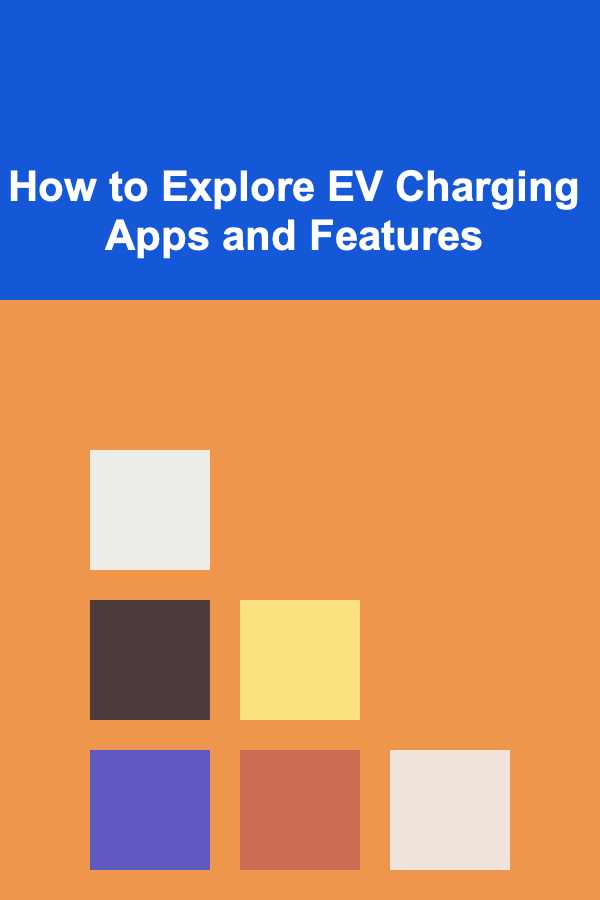
Start Earning Passive Income with Deep Learning Projects Today
ebook include PDF & Audio bundle (Micro Guide)
$12.99$5.99
Limited Time Offer! Order within the next:

In the age of artificial intelligence (AI) and deep learning, an exciting opportunity has emerged for those looking to generate passive income. Whether you're a beginner or an experienced developer, deep learning has become an accessible tool to build products that can earn money passively over time. From automating tasks to providing services through intelligent systems, deep learning offers immense potential for creating scalable, sustainable income streams.
In this article, we'll dive deep into how you can start earning passive income by leveraging deep learning projects. By understanding the core concepts of deep learning, identifying profitable opportunities, building effective systems, and automating processes, you can begin your journey toward financial freedom. We'll explore the benefits of deep learning, how to get started with it, practical project ideas, and strategies for monetizing these projects.
What is Deep Learning?
Before we dive into how you can earn passive income with deep learning, let's first define what deep learning is and why it's such a powerful technology.
Deep learning is a subset of machine learning (ML), which itself is a subset of artificial intelligence (AI). In essence, deep learning algorithms model complex patterns in large sets of data using artificial neural networks. These networks consist of layers of nodes (neurons), and each layer processes information to extract relevant features.
The "deep" in deep learning refers to the multiple layers in the neural network, which allow the system to learn intricate patterns. Deep learning has been particularly successful in fields such as image recognition, natural language processing (NLP), and speech recognition, with applications ranging from autonomous vehicles to customer service bots.
Deep learning is highly effective because it automates feature extraction and model improvement through large datasets, making it one of the most powerful techniques for solving complex problems.
Why Deep Learning is Perfect for Passive Income
Deep learning presents several advantages when it comes to creating passive income. Here's why it is ideal for those seeking a revenue-generating machine:
1. Automation
Once a deep learning model is trained and deployed, it can run autonomously, minimizing the need for human intervention. This level of automation means that after the initial setup, the system can continue generating income without requiring constant oversight.
2. Scalability
Deep learning models can scale easily to handle more data or users. As the model improves, it can handle more traffic or larger datasets with minimal additional effort.
3. Long-Term Monetization
By developing deep learning products or services that solve real-world problems, you can create solutions that people or businesses need consistently, providing recurring passive income.
4. High Demand in Various Industries
Deep learning has applications in a wide range of industries, including healthcare, finance, e-commerce, entertainment, and more. This broad applicability means that there are numerous opportunities to build solutions that generate ongoing income.
5. Low Maintenance After Deployment
Once your system is up and running, maintenance is minimal compared to traditional businesses. The models improve over time as they process more data, providing long-term value to users with little intervention from you.
Getting Started with Deep Learning for Passive Income
If you're new to deep learning, it's essential to understand the foundational concepts and tools required to build successful projects. Here's how you can start:
1. Learn the Fundamentals of Deep Learning
To build successful deep learning projects, you first need to understand the basics. You don't need to be an expert, but you should grasp key concepts such as:
- Neural Networks: These are the backbone of deep learning models, designed to mimic the human brain's decision-making process.
- Convolutional Neural Networks (CNNs): These are primarily used for image-related tasks, such as object detection or image classification.
- Recurrent Neural Networks (RNNs): Useful for tasks involving sequential data, such as time series analysis or natural language processing.
- Generative Adversarial Networks (GANs): These networks are designed to generate new data that mimics real data, useful in creating synthetic images, videos, or text.
- Transfer Learning: A technique where you can fine-tune pre-trained models for your specific needs, saving time and computational resources.
You can find numerous online resources, such as Coursera, edX, and Udacity, offering courses to get you started. The more hands-on experience you gain through building models and understanding their behavior, the better.
2. Choose Your Deep Learning Framework
There are several deep learning frameworks available that simplify the process of building and training models. Some of the most popular ones include:
- TensorFlow: Developed by Google, TensorFlow is one of the most widely used frameworks for deep learning, supporting both research and production environments.
- PyTorch: Created by Facebook, PyTorch is known for its flexibility and ease of use, especially for research and prototyping.
- Keras: A high-level API that runs on top of TensorFlow, Keras is popular for its simplicity and user-friendly interface.
Pick a framework that best suits your project's needs and your learning style. Each has its strengths, and all are equipped with extensive documentation and active communities.
3. Prepare Data
The success of any deep learning model depends largely on the quality of the data it is trained on. You'll need large, high-quality datasets that are relevant to your project. You can find datasets online for various domains such as:
- Kaggle: A platform with a wide variety of datasets across different domains.
- UCI Machine Learning Repository: Another collection of datasets used for machine learning and deep learning experiments.
- Google Dataset Search: A tool that helps you find datasets on the web.
In many cases, you may need to preprocess your data by normalizing it, dealing with missing values, and ensuring it is in a format suitable for deep learning models.
Profitable Deep Learning Project Ideas
Now that you have a basic understanding of deep learning, it's time to explore some real-world project ideas that can help you generate passive income.
1. Create an AI-Powered SaaS Product
One of the best ways to leverage deep learning for passive income is by creating a Software as a Service (SaaS) product that offers AI-driven solutions. Here are some ideas:
- AI-Powered Chatbots: Many businesses are looking for ways to automate their customer support. You can develop a chatbot using deep learning models like RNNs or transformers (such as GPT-3) and offer it as a subscription-based service.
- AI-Driven Analytics Tools: Businesses in various industries need to analyze data to make informed decisions. By developing a deep learning-based analytics tool, you can help businesses predict trends, optimize operations, and automate decision-making.
- Content Personalization Engines: Many websites and e-commerce platforms use deep learning to recommend products or personalize content for their users. You can build an AI system that personalizes the user experience and offer it as a service.
2. Develop AI-Based Image or Video Generation Tools
Generative Adversarial Networks (GANs) are great for generating realistic images and videos. Here are some ideas:
- AI Art Generation: Many people are willing to pay for unique artwork generated by AI. You can create a deep learning model that generates art and sell these artworks online.
- Deepfake Technology: While deepfake technology has raised ethical concerns, it's also used in entertainment, advertising, and content creation. You can develop a platform that allows users to create realistic deepfake videos for specific use cases.
3. Build an AI-Powered Content Creation Tool
Content creation is in high demand, especially for blogs, marketing campaigns, and social media. You can build a tool that uses deep learning to generate high-quality content automatically.
- AI Writing Assistant: Similar to GPT-3, you can create an AI model that helps users write blog posts, emails, and other types of content. Monetize through subscriptions or a pay-per-use model.
- AI Video Editing: You can create a deep learning-powered video editing tool that automatically edits raw footage, adds effects, and produces polished videos. Content creators could use this tool to save time on editing.
4. AI-Powered Trading Bots
Financial markets provide numerous opportunities to use AI for passive income. You can build a deep learning-powered trading bot that automates stock, cryptocurrency, or forex trading.
- Algorithmic Trading: Use deep learning to predict market movements and execute trades based on patterns in the data.
- Cryptocurrency Bots: Cryptocurrency markets are volatile, and deep learning can help create bots that make trading decisions automatically based on market trends.
5. AI-Driven Voice Assistance and Recognition
Voice recognition and natural language processing (NLP) are rapidly evolving fields. You can create a voice assistant or transcription tool and monetize it in the following ways:
- Voice-to-Text Services: Offer a transcription service powered by deep learning models that convert audio to text for users in various industries like journalism, content creation, and customer service.
- Voice Assistants for Smart Devices: Build voice recognition systems for IoT devices, allowing users to interact with technology through voice commands.
Monetizing Your Deep Learning Projects
Once you have built your deep learning model or application, the next step is to monetize it. Here are several ways to generate income:
1. Subscription-Based Model
Offer your deep learning-based product or service through a subscription model. This could be a monthly or annual fee, ensuring predictable and recurring revenue.
2. Freemium Model
Offer a basic version of your product for free and charge for advanced features or premium access. This is a great way to attract users while generating income from those who need additional functionality.
3. Pay-Per-Use Model
If your deep learning service requires a high level of computational resources, you can charge users based on their usage. For instance, if your model processes large datasets, charge users per query or task completed.
4. Licensing
If your deep learning technology is unique or highly valuable, you can license it to other businesses, allowing them to use your models or algorithms in exchange for a fee.
5. Advertising
For projects like AI-powered content generation, you can monetize through advertising by integrating ads into your platform or offering sponsored content.
Conclusion
Deep learning offers a unique opportunity to create scalable and automated systems that generate passive income. By learning the fundamentals, choosing the right projects, and monetizing them effectively, you can build a business that requires minimal ongoing effort once set up. Whether you create AI-driven SaaS products, generative tools, or trading bots, the possibilities are vast.
The key is to identify problems that can be solved with deep learning and build solutions that people are willing to pay for. With consistent effort and innovation, you can turn your deep learning projects into a steady source of passive income.

How to Build a Checklist for Achieving Work-Life Balance: An Actionable Guide
Read More
How to Build a Checklist for Selecting the Right Migration Tools for Your Website
Read More
How to Enhance Your Intuition with Brain Science
Read More
How to Explore EV Charging Apps and Features
Read More
How to Store Your Music Books by Genre
Read More
How to Use Neutral Decor to Attract More Buyers
Read MoreOther Products

How to Build a Checklist for Achieving Work-Life Balance: An Actionable Guide
Read More
How to Build a Checklist for Selecting the Right Migration Tools for Your Website
Read More
How to Enhance Your Intuition with Brain Science
Read More
How to Explore EV Charging Apps and Features
Read More
How to Store Your Music Books by Genre
Read More